History of Fashion 1970s – 1980s
History of Fashion 1970s – 1980s
‘I don’t care how much something costs as long as it’s beautiful’ Ossie Clark 1970
The Seventies The Seventies saw the progression of the sixtiessocial values continue, starting off with the first world earth day in 1970. The antiwar movement in Vietnam took power and the arrival of a new music genre splashed across fashion with glam rock androgynous, disco glamour and the start of women’s tailoring. The end of the seventies saw Margret Thatcher elected as British Prime Minister influencing the future decade’s power dressing for women internationally.
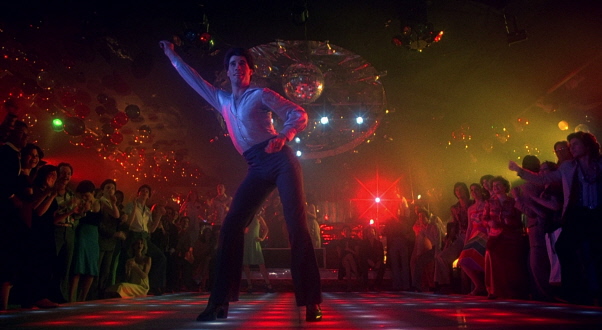
Copyright © 1977 Paramount Pictures
Arts and Culture With the Seventies came a new introduction to music – the Disco era arrived! New pop groups including Abba and the Bee Gees were introduced to the music scene and influenced the teenage social activities and fashions. The film Saturday Night Fever was inspired by Disco music and the clothes worn in the film became famous as part of the Seventies style. David Bowie and Gary Glitter embodied the glam rock style of musicians and singers who performed in outrageous clothes, makeup and hairstyles. It was the first time men were experimenting with makeup and outfits. Cat suits, body paint and a camp/androgynous feel symbolised the glam rock style. The Punks Anarchy arrived in the 1970s as a group of young people defined themselves as anti-fashion. This anti establishment group cut up old clothes, destroyed, and refashioned outfits. Doc martens, piercings, chains, safety pins and padlocks were all worn to help embellish the look. The punk rockers had their own way of expressing themselves and sported Mohican hair styles usually dyed bright, outrageous colours. Tartanchecks, leather studs were all seen as anti fashion. They were completely polarised from the disco style.
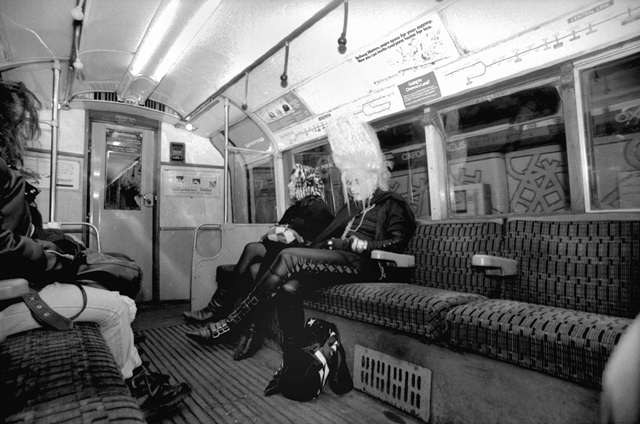
Copyright © AFP / Collection Roger-Viollet
The Punk style was closely aligned with the Punk music movement. The Sex Pistols hit fame in the seventies with their manager Malcolm Maclaren. Maclaren married Vivienne Westwood and together they opened the shop ‘Sex’ on Kings Road, London. The band was all dressed by the shop, which sold leather and rubber fetish goods. The lead singer Sid Vicious died at the age of 22 which led to Johnny Rotten auditioning in the ‘Sex’ store as a replacement. During the Seventies the government was determining what music could be broadcast in the UK. The Sex Pistols were seen as a bad influence on young people and some town councils banned the band playing there. Shapes and Silhouettes
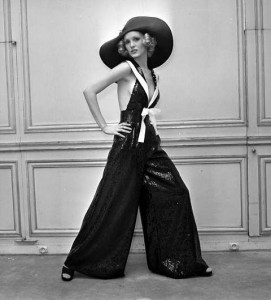
Copyright © AFP / J. Cuinières / Roger-Viollet – Jean Patou 1972
The mini skirt wasn’t as essential for the Seventies style, hot pants had taken. However, women weren’t restricted to just a short length style for their skirts. There were also maxi skirts, flared trousers, high waist pants and halter neck cat suits. The hippie styles were still flowing over from the sixties with frayed clothing and tie dye shirts still popular. When mini dresses were worn they were paired with maxi styled coats combining the sixties style with the new seventies look. However in addition to the mini and maxi skirt, mid calf length called midis were worn. Offering women the choice of all three lengths. There was Studio 54 inspired clothing with long floaty fabrics with batwing sleeves which were a complete contrast to the tight fitting hot pants worn. Glam rock was inspiring some trends with women wearing high waisted, flared satin trousers or denims. Sequin, rhinestones and ostrich-feather boas were draped over shoulders or on turbans. Kaftans and kimonos were also popular due to the Hippie style from the Sixties. Denim developed during the Seventies. The styles worn were tight at the top and then flared at the bottom. Levi jeans became hugely popular for both men and women during the seventies. It was important for them to be skin tight at the top. Skinny jeans started to be worn with women’s stretch denim now being available on the High Street with embroidered patterns being popular embellishments. The jersey wrap dress was designed by Diane von Furstenberg in 1971 and became incredibly fashionable; it could be worn to work, discos and nightclubs as the flattering cut of the dress suited many different figures. Peasant style clothing inspired by the 17th century influenced the Seventies, seen in blouses with lace and off the shoulder necklines. Yves Saint Laurentbacked the peasant style in 1976 with skirts gathered into tiers and shoulder lines dropping. Floral patterns and prints were fashionable with this trend especially when worn with the peasant style skirt. The leotard started its growing popularity mid seventies as a layered style became popular. The long sleeved leotard was worn to add colour and texture to the body. It also became a staple with the disco scene were the ease of movement and flexibility it gave you was needed.

Copyright © AFP / Jean-Pierre Couderc / Roger-Viollet – Yves Saint Laurent April 1974
Accessories Platforms were first introduced in 1971 and became an essential footwear style worn by most women and the more fashionable men. Clogs also became popular due to their similar chunky look. Fringing on accessories was also a key look as were silk neck scarves. Menswear Coloured suits became popular for men with the brighter the suit the better! Men could mix and match with shirts, large collars, vivid patterns and colours. The three piece suit was a key look for men. Wide legged or flared trousers were worn with high rise waistcoats. For a casual look, chunky knit cardigans and long leather jackets were worn with stone wash denim. The look was popularized through television shows like Starsky and Hutch. The whole idea was a more feminine look for men. The Icons
With her two tone bleached blonde hair, Debbie Harry was easily a punk icon. The lead singer of the band Blondie, commercial success came after their debut album in 1976. The first wife of Mick Jagger; Bianca Jagger was a Seventies socialite, close friends with Andy Warhol she was often associated with New York City’s Studio 54. She was seen in long draping hooded dresses and jumpsuits that embodied the seventies glamour. Known for her gapped tooth smile, Lauren Hutton was a supermodel and actress. Signing a Revlon cosmetics deal in 1974, she was seen hanging out at Studio 54 with Bianca Jagger in men’s shirts, a blazer and trilby hat. The Designers Ossie Clark After studying at London’s Royal College of Art, Ossie Clark emerged in the 1960s to be part of the epicentre of the swinging Sixties. Marrying Celia Birtwell they merged her textiles with his cutting to create beautiful garments. Through inspiration from his love of dance, he made clothes that were free moving and non restrictive. This style of dressing became popular during the Seventies largely due to Clark’s designs. Giorgio Armani In 1975 Giorgio Armani founded Giorgio Armani Spa with a friend in Milan; following its success he founded the Giorgio Armani Corporation where he began producing clothes for the United States. Armani popularized the wearing of corduroy fabrics during the seventies. Missoni Founded by Ottavio and Rosit Missoni in 1953 the seventies saw Missoni reach its peak in the fashion world. Known for its knitwear, Missoni was popular for its patterns and abstract floral designs which were popular during the era. Sonia Rykiel Sonia Rykiel’s style dominated the Seventies American market. In 1974 she created a range of clothes that were highly individual but completely ready to wear. She also designed her first pullover with reversed seams. Her Seventies style included fluid knitted garments, long scarves, rhinestones and dark black colours. 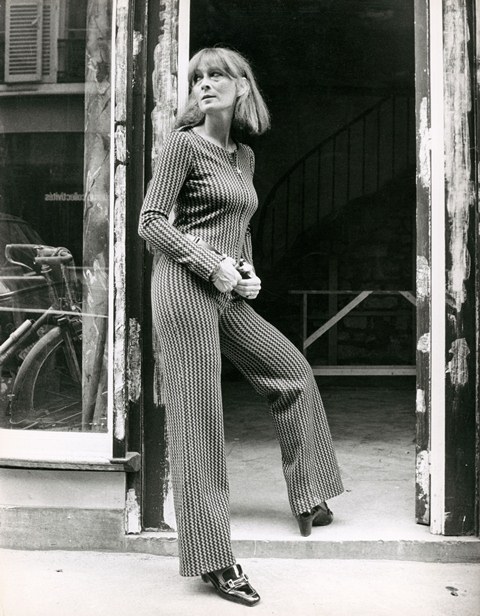 Kenzo Takada Kenzo Takada grew to success during the seventies. He drew inspiration from many different cultures over the world, mixing Western and Oriental folk influences. He used unusual prints and fluid lines and had an excellent understanding of what young consumers wanted. His shows were always theatrical as portrayed in his 1978 and 1979 catwalk shows, which took place in a circus tent, finishing with him riding an elephant. Bottega Veneta Known for its luxury Italian leathers, Bottega Veneta was established in 1966 by Michele Taddei and Renzo Zengiaro. During the late Sixties and Seventies the company’s artisans developed a leather-weaving technique that is iconic to the brand. The technique called ‘intrecciato’ is still used for the products today. The Seventies saw the brands reputation grow and during this period they came up with the slogan “When your own initials are enough.” Comme des Garçons Founded in the 1973, Rei Kawakubo put Tokyo on the map as a fashion capital. Her Seventies mantra of monochrome colours, unusual elastication and the need to mix up pattern cutting sent her flying into success for the following decades. Diane Von Furstenberg Credited for creating the wrap dress in the early Seventies, Diane Von Furstenberg first studied in Geneva before marrying Prince Egon Von Furstenberg in 1969. Moving to America her new royal status enabled Diane to enter the fashion world with ease. With her talent of understanding her market, she created the wrap dress which was an instant success. In 1972 Von Furstenberg opened a show room on Seventh Avenue which helped her make the cover of Newsweek, creating her success for the following years. PradaFounded in 1913, Mario Prada originally set up Prada as a leather goods company. However in the 1970’s, Mario’s granddaughter Miuccia Prada took over the company. Miuccia gave Prada a change in direction, moving it towards high fashion. Miuccia designed her own backpacks and released them in 1979. Not an instant success, but the backpack did move on to become the company’s first commercial hit.
Kenzo Takada Kenzo Takada grew to success during the seventies. He drew inspiration from many different cultures over the world, mixing Western and Oriental folk influences. He used unusual prints and fluid lines and had an excellent understanding of what young consumers wanted. His shows were always theatrical as portrayed in his 1978 and 1979 catwalk shows, which took place in a circus tent, finishing with him riding an elephant. Bottega Veneta Known for its luxury Italian leathers, Bottega Veneta was established in 1966 by Michele Taddei and Renzo Zengiaro. During the late Sixties and Seventies the company’s artisans developed a leather-weaving technique that is iconic to the brand. The technique called ‘intrecciato’ is still used for the products today. The Seventies saw the brands reputation grow and during this period they came up with the slogan “When your own initials are enough.” Comme des Garçons Founded in the 1973, Rei Kawakubo put Tokyo on the map as a fashion capital. Her Seventies mantra of monochrome colours, unusual elastication and the need to mix up pattern cutting sent her flying into success for the following decades. Diane Von Furstenberg Credited for creating the wrap dress in the early Seventies, Diane Von Furstenberg first studied in Geneva before marrying Prince Egon Von Furstenberg in 1969. Moving to America her new royal status enabled Diane to enter the fashion world with ease. With her talent of understanding her market, she created the wrap dress which was an instant success. In 1972 Von Furstenberg opened a show room on Seventh Avenue which helped her make the cover of Newsweek, creating her success for the following years. PradaFounded in 1913, Mario Prada originally set up Prada as a leather goods company. However in the 1970’s, Mario’s granddaughter Miuccia Prada took over the company. Miuccia gave Prada a change in direction, moving it towards high fashion. Miuccia designed her own backpacks and released them in 1979. Not an instant success, but the backpack did move on to become the company’s first commercial hit.
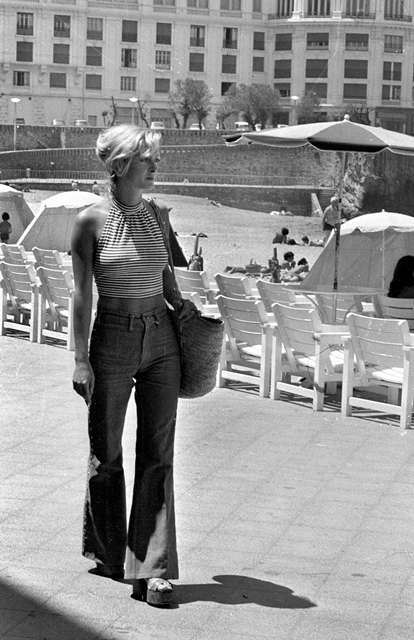
Copyright © AFP / Lipnitzki / Roger-Viollet
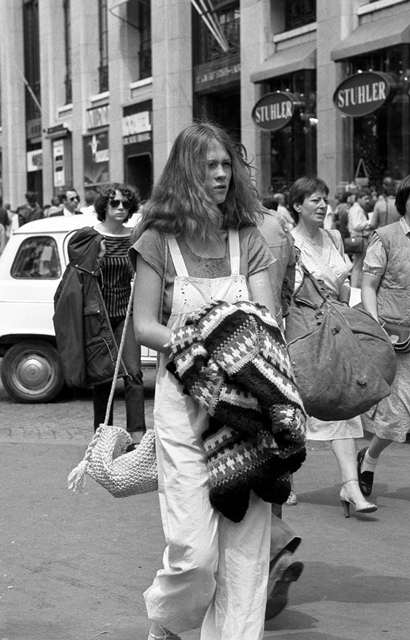
Copyright © AFP / Collection Roger-Viollet
Retailers Van Allen The previous decade of the Sixties had boutiques. During the Seventies High Street stores started to become more popular with the appearance of chain stores. The market leader on the High Street was Van Allan which was more of an up market shop than some of the alternative cheaper stores. As Van Allan was the leader in High Street fashion it could be compared to as the Topshop of the Seventies. Chelsea Girl Chelsea Girl was another retailer which focussed on being ‘cheap and cheerful’ and was directed at the younger female shoppers. It could be regarded as being similar to New Look today. Eventually this shop became River Island. With the opening of these new retailers on the High Street fashion was starting to become more readily available. Biba Biba was still hugely popular, so much so the business moved locations in 1974 to the old seven storey Derry and Tom’s department store. The move attracted up to a million customers weekly making it one of the most visited tourist attractions in London. Once described by the Sunday Times as ‘the most beautiful store in the world’, the ‘big biba’ was also home to the fifth floor Rainbow Room a hangout out for the elite. Liberty Founded by Arthur Liberty, Liberty is a British department store. After working for Messrs Farmer and Rogers in 1862, Liberty decided to open his own business. With a loan from his father-in-law, Arthur Liberty took a lease and opened his own shop in Regent Street in 1875 selling fabric, ornaments and objets d’art from Japan and the East. With soaring success since 1875, Liberty is known for its quality and beautiful products. The Seventies saw the celebration of this established company with Liberty honouring its centenary in 1975 which was proclaimed by a major exhibition at the Victoria and Albert Museum.
History of Fashion 1970s – 1980s

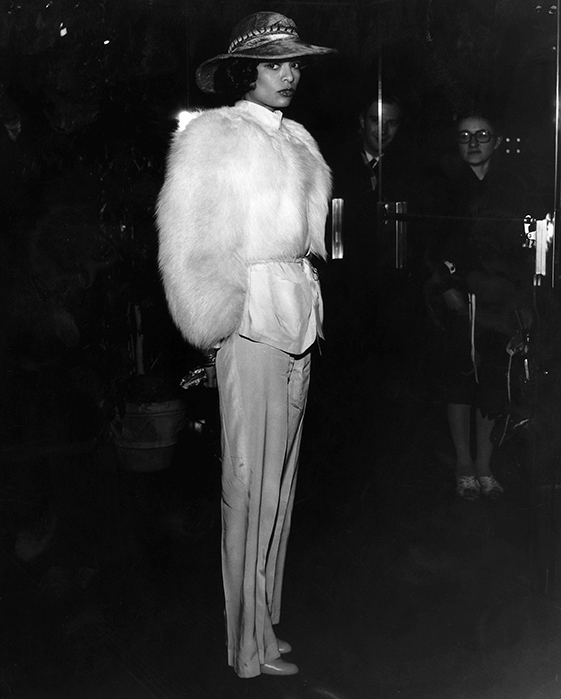
wow it is so different (but still cool) then it is now.
I could remember as if it was yesterday when I use to see a lot of women in different parts of my every City i have visited in the early to late 90’s where a young lady would wear type designer jeans and looked great in them even though they where not models and when i looked at them to admire their beauty they would look back and smile at me, some would say hello. Today’s women who wear nothing but skin tight Yoga pants that reveal more, shows more and have the obesity when looked at by a man would cry wolf that a man is looking at them, yet some at the same time they do that do get an man’s attraction and if that’s not enough they go posting their bottoms online for the whole world of creepy men to look at. I miss the days when women worn torn jeans, at least back that they was revealing too much.